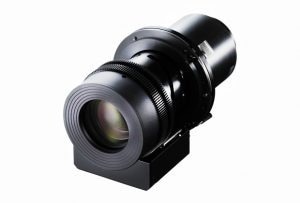Collimating is a method of aligning a light beam or stream of particles in a parallel path. The technique reduces particle distribution while ensuring parallel propagation.
Collimation optics is the process of aligning light beams in a parallel direction. An optical collimator is a device used to narrow parallel light beams.
An optical collimator consists of a collimating lens connected to a measuring device such as a collimator, spectrometer, or light meter. A collimator lens utilized for remote sensing is connected to the measuring device through a fiber connection.

Image Credit: Shanghai Optics
What is a Collimating Lens?
A collimating lens, typically constructed from a curved mirror, is meticulously aligned to maximize light collection from a source. This alignment ensures that the light rays can be observed without parallax errors. The lens effectively prevents light from dispersing in various directions, enabling users to direct illumination in a parallel path.
Collimating lenses come in two main types: single and achromatic beam collimators. These devices are often crafted from materials such as lead, tin, tungsten, bismuth, molybdenum, and high-density plastic. The production of collimating lenses involves several key steps: molding, polishing, coating, assembling, and testing to ensure quality and performance.
How is a Collimating Lens Used?
Optical collimator systems consist of a tube with a convex lens on one end and a flexible aperture on the other. The convex lens reduces the beam divergence of any light that enters the aperture, allowing the light to leave the collimator in a parallel direction. Collimating lenses are employed in a variety of applications, including:
Light measurement applications – Collimating lenses can measure light from sources such as OLED panels. The use of the collimating lens allows the measurement of light’s hue, flicker, and spectral power distribution.
Display measurement – Collimating lenses allow the evaluation of display parameters such as flicker, color, response time, gamma, and white point correction. The lens enables the alignment of the measurement point, resulting in precise and reliable measurement results.
Analysis applications – Collimating lenses are used to transmit and evaluate spectral data of transparent materials during manufacturing operations. The ability of the light to enter the sample at a divergent angle allows for stable and repeatable measurements.

Image Credit: Shanghai Optics
Other applications of collimators include:
- Nuclear power stations
- Calibration of optical devices
- CO2-cutting lasers and laser diodes
- Radionuclide imaging
- Radiology
- Planar scintigraphy for electronic detection medical imaging
- Astronomy applications
- Pigtailed receptacles
- Scintillation imaging
How Does a Collimating Lens Work?
When light travels through a reflecting object, it scatters into different angles. An optical collimator transforms a divergent beam of light into a parallel beam. A collimator also decreases the spatial cross-section of the light beam, making it smaller.
A collimator generally consists of a collimator lens or a curved mirror with a light source as its focal point. To limit light dispersion, the collimating device’s focal length and light source size must be balanced.
To achieve optimal collimation, one must reduce the light source or increase the focal length of the collimating system. If the focal length of the collimating system is increased, it must be ensured that the system is far away from the light source.
This enables the focusing system to collect less light while reducing the power of the resultant light beam.
While some collimators operate in a fixed alignment, others require adjustment to change the distance between the collimation lens and the light source. Beam-pointing stability is also crucial, as small thermal drifts can cause a significant change in the beam direction, particularly if the focal length of the collimating lens is small.
Depending on the light source, beam collimators may need additional optical components to reduce light divergence. For example, if the light sources have a high beam divergence, it may be required to employ aspheric optics to decrease beam quality deteriorations.
Similarly, if the beam is substantially asymmetrical, meaning it diverges more in one direction than the other, an anamorphic prism pair can be used to obtain a circular light beam.

Image Credit: Shanghai Optics
Conclusion
In conclusion, collimation lenses enable light rays to travel in a parallel direction, preventing laser beams from dispersing in undesirable directions.
One significant advantage of using collimating lenses is that they allow users to customize the field of view. This permits the collection of efficient and spatially resolved data. Collimating lenses also allow users to configure illumination.
Shanghai Optics manufactures a variety of collimating lenses. These lenses are made of high-quality materials and include a customized coating, making them perfect for high-power laser beams. Shanghai Optics also offers customized lenses that can meet the specific needs of its clients.

This information has been sourced, reviewed and adapted from materials provided by Shanghai Optics.
For more information on this source, please visit Shanghai Optics.